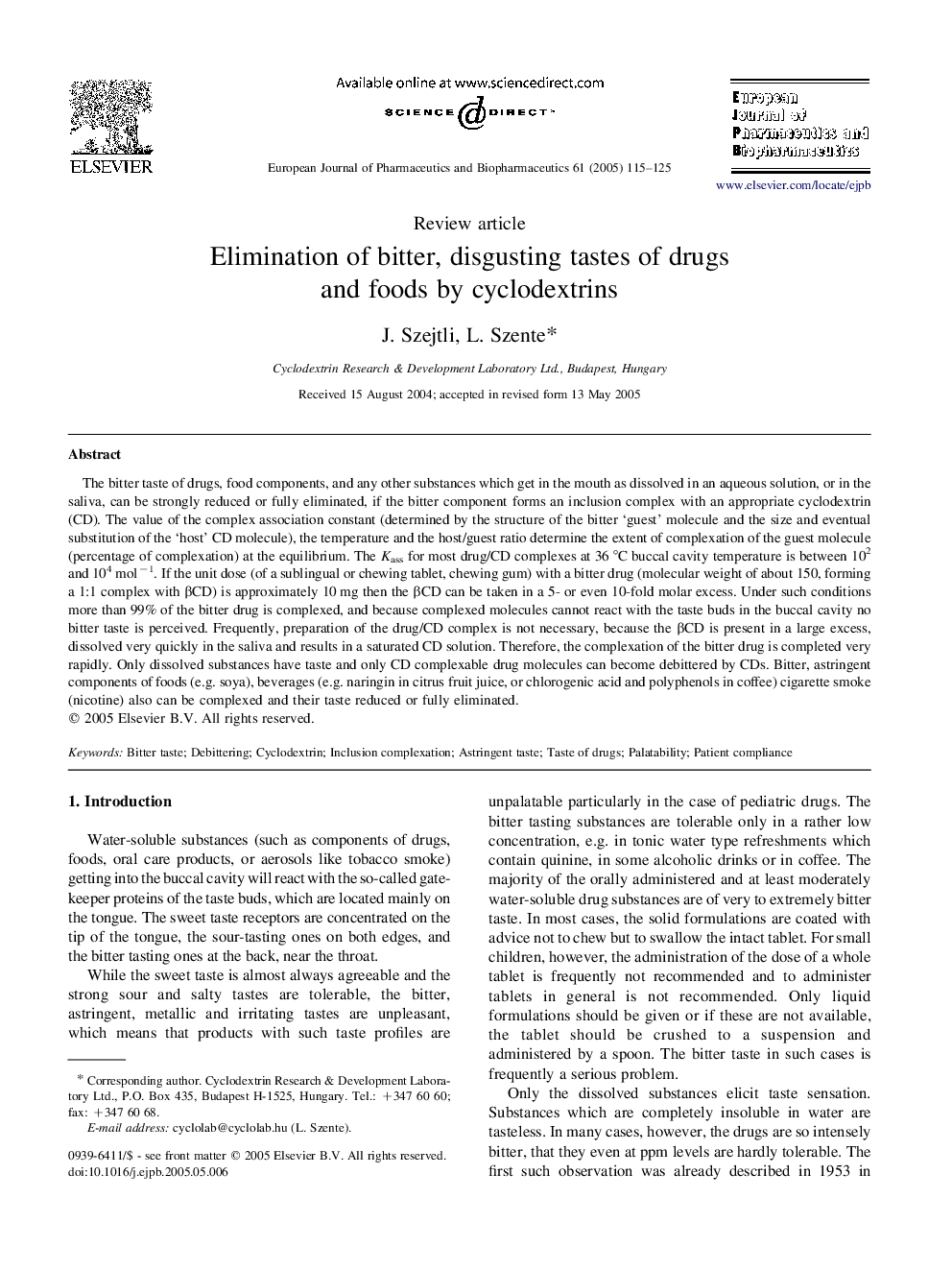| Article ID | Journal | Published Year | Pages | File Type |
|---|---|---|---|---|
| 9901402 | European Journal of Pharmaceutics and Biopharmaceutics | 2005 | 11 Pages |
Abstract
The bitter taste of drugs, food components, and any other substances which get in the mouth as dissolved in an aqueous solution, or in the saliva, can be strongly reduced or fully eliminated, if the bitter component forms an inclusion complex with an appropriate cyclodextrin (CD). The value of the complex association constant (determined by the structure of the bitter 'guest' molecule and the size and eventual substitution of the 'host' CD molecule), the temperature and the host/guest ratio determine the extent of complexation of the guest molecule (percentage of complexation) at the equilibrium. The Kass for most drug/CD complexes at 36 °C buccal cavity temperature is between 102 and 104 molâ1. If the unit dose (of a sublingual or chewing tablet, chewing gum) with a bitter drug (molecular weight of about 150, forming a 1:1 complex with βCD) is approximately 10 mg then the βCD can be taken in a 5- or even 10-fold molar excess. Under such conditions more than 99% of the bitter drug is complexed, and because complexed molecules cannot react with the taste buds in the buccal cavity no bitter taste is perceived. Frequently, preparation of the drug/CD complex is not necessary, because the βCD is present in a large excess, dissolved very quickly in the saliva and results in a saturated CD solution. Therefore, the complexation of the bitter drug is completed very rapidly. Only dissolved substances have taste and only CD complexable drug molecules can become debittered by CDs. Bitter, astringent components of foods (e.g. soya), beverages (e.g. naringin in citrus fruit juice, or chlorogenic acid and polyphenols in coffee) cigarette smoke (nicotine) also can be complexed and their taste reduced or fully eliminated.
Related Topics
Life Sciences
Biochemistry, Genetics and Molecular Biology
Biotechnology
Authors
J. Szejtli, L. Szente,
